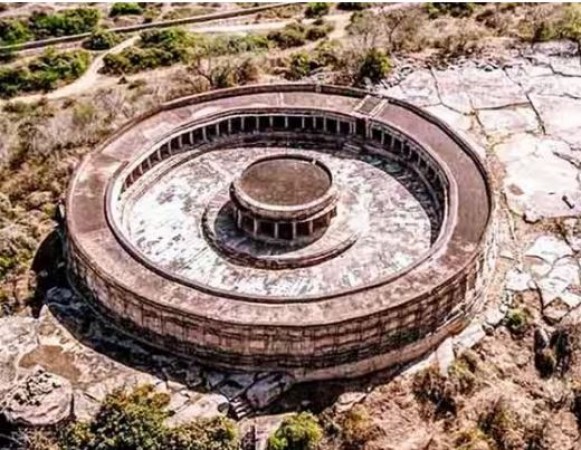
Yogini temples, also known as Chausath Yogini temples or simply Yogini shrines, are unique and intriguing structures that hold great significance in the realm of Hindu architecture and spirituality. These ancient temples, scattered across the Indian subcontinent, are dedicated to the worship of the Yoginis, powerful and mystical female deities associated with the concept of Shakti, the divine feminine energy.
Yogini temples originated during the 9th to 13th centuries, primarily in the central and northern regions of India. The temples were constructed by various ruling dynasties of that era, including the Chandela, Pratihara, and Kalachuri dynasties. These dynasties held a deep reverence for the Yoginis and sought to honor their power and presence through the construction of these remarkable shrines.
Also Read: Modhera Sun Temple: Architectural Marvel
Yogini temples are distinct in their architectural design. Unlike the more common temple structures dedicated to male deities, Yogini temples typically feature a circular or octagonal layout, known as the chakra plan, resembling a mandala. The temples consist of multiple chambers or niches, each housing a sculpture of a Yogini. The number of chambers varies across different Yogini temples, ranging from 64 to 81 or even more, representing the mythical 64 Yoginis or Chausath Yoginis.
Each Yogini is depicted in her unique form and posture, often accompanied by animal or mythical creature motifs. The sculptures are intricately carved, showcasing the artistic and sculptural prowess of the craftsmen of that era. The Yoginis are portrayed as fierce, powerful, and divine, symbolizing the embodiment of feminine energy in its myriad forms.
Also Read: Konrak Sun Temple: Corner Sun
Yogini temples serve as sacred spaces for the worship of the Yoginis, who are considered manifestations of the primordial cosmic energy, Shakti. These goddesses are believed to possess supernatural powers and are revered as protectors, healers, and bestowers of blessings. The Yoginis are associated with various aspects of life, including fertility, knowledge, warfare, and transformation.
Devotees visit Yogini temples to seek the blessings of the Yoginis, offering prayers and performing rituals to invoke their divine presence. The worship practices often involve chanting mantras, reciting hymns, and performing specific yogic and tantric rituals. Yogini temples are considered potent energy centers that facilitate spiritual growth, healing, and the awakening of inner power.
Also Read: Kailasa Temple Ellora: Remarkable Architectural Marvel
The Yogini temples have also been associated with esoteric spiritual practices, including the worship of the Yoginis through tantric rituals. Tantric traditions emphasize the union of masculine and feminine energies, and Yogini worship plays a significant role in this context. The rituals performed in Yogini temples involve the channeling of energy, meditation, and visualization techniques.
These practices aim to awaken the dormant divine energy within individuals, enabling them to attain spiritual enlightenment and transcendence. Yogini temples are regarded as places of spiritual initiation and transformation, where practitioners can deepen their connection with the divine feminine and harness their inner power for personal and spiritual growth.
Also Read: Sri Ganga Saraswathi Devasthanam Temple
Yogini temples stand as unique and captivating monuments dedicated to the divine feminine energy. These sacred spaces hold a rich history, intricate architecture, and deep spiritual significance. Yogini worship continues to inspire seekers, connecting them to the transformative power of the feminine divine. By preserving and exploring the heritage of Yogini temples, we can unlock the wisdom and spiritual potential they hold, allowing the divine feminine to guide and empower individuals on their spiritual journeys.
Also Read: Lingaraja Temple: Oldest and Largest Temple of Bhubaneswar
Mumba Devi Temple: Goddess of Mumbai